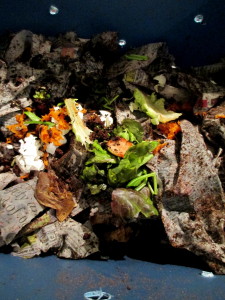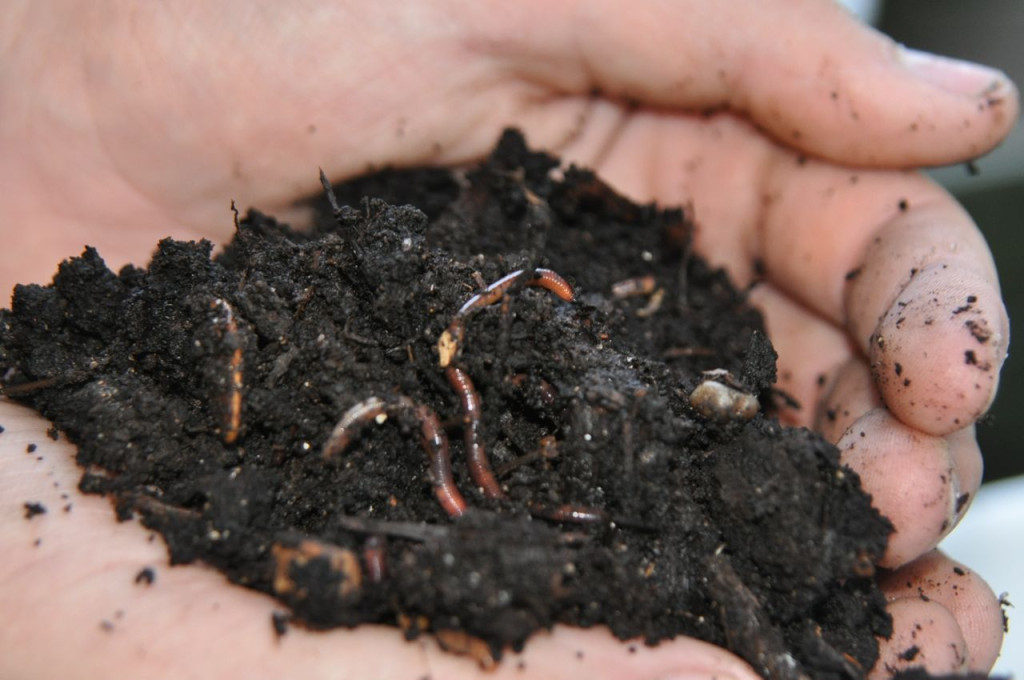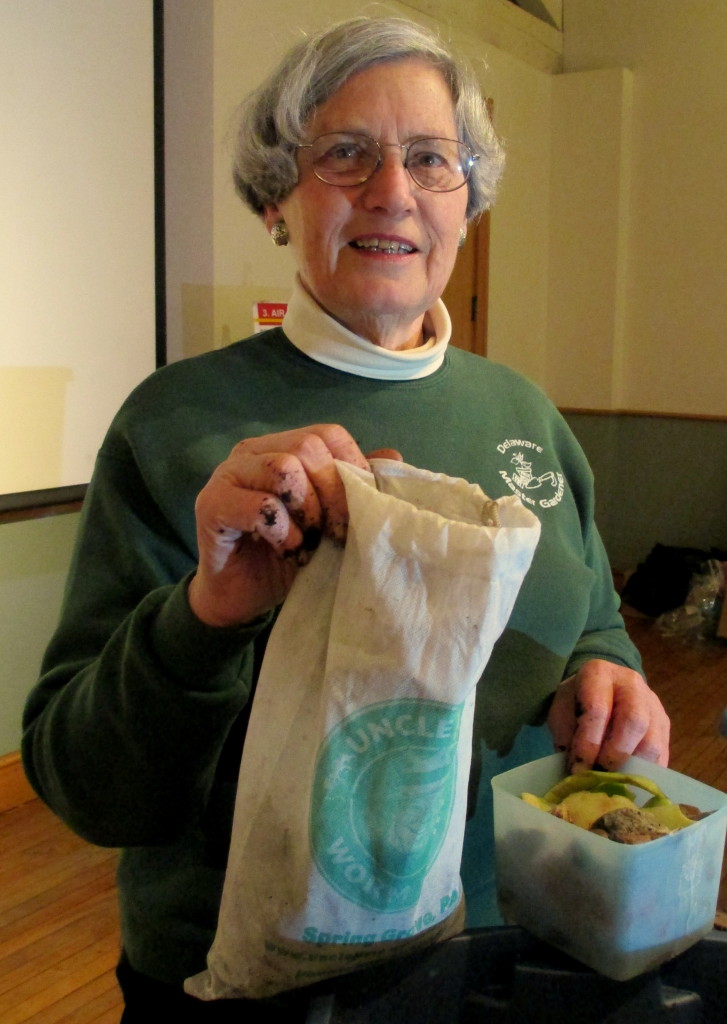
Hetty Franke, Master Gardener and “Queen of Compost in Delaware” recently held a workshop at TheDCH. Teaching all ages, from school children to senior citizens, Hetty’s mission for many years has been to make people aware that plant matter is also a resource, not trash.
Composting of all kinds was discussed: aerobic composting (compost pile or container), anaerobic (digging a trench and filling it in) and vermicomposting (worm composting).
Here’s a brief overview. Aerobic composting in bins or piles requires aeration for decomposition. This requires turning to keep oxygen levels up for the decomposing microorganisms breaking down the plant matter. Layering of Nitrogen (Green) matter such as kitchen scraps, manure and other green plant material with Carbon (Brown) matter such as shredded leaves, straw, paper and wood chips keep the mix from getting slimy and smelly. But aerobic composting isn’t efficient when you’re continually adding new material to the pile. A pile must have time to decompose, so therefore, it is better to have an active pile and one that is left alone except to aerate it. This requires space, and, in some areas, is not allowed, so check what the regulations in your area are first!
Anaerobic composting is simply digging a hole or trench and filling it with the plant matter, then filling it back in. This can be done under bushes and in flowerbeds in small yards. It is a method I used in my last very small space garden. It does not require oxygen, although it is a slower method of decomposition than aerobic composting.
But, what do you do if you don’t have the space for a compost pile or you don’t want to be constantly running outside? Vermicomposting is the answer and , even better,a worm bin is efficient when you’re continually adding new material. Composting at home in a worm tub is most suitable for smaller families and apartment dwellers, or to be used in combination with an outside composting method. A well-tended worm bin shouldn’t smell, so some people will keep them in a kitchen cupboard if they’re short on space or just want the ultimate convenience for adding their kitchen waste. The garage or basement are also possible locations for your worm bin. (Note: do not add animal waste, bones, fats or meat to your bins or compost piles.)
Follow the easy steps below to set up your own worm bin and begin vermicomposting at home. You will keep plant matter out of the landfill and have the benefits of compost and compost tea for your plants, worms for feeding birds and pet reptiles and going fishing, too!
Materials needed: one plastic storage tub and cover, a shallow tray for underneath and two blocks of wood or bricks to set it on,an electric drill with two bits (one large, one small), a few handfuls of peat moss or garden soil, newspaper, worms and kitchen scraps.
* red wriggler worm source and information


Original article and pictures take ourfairfieldhomeandgarden.com site
No comments:
Post a Comment